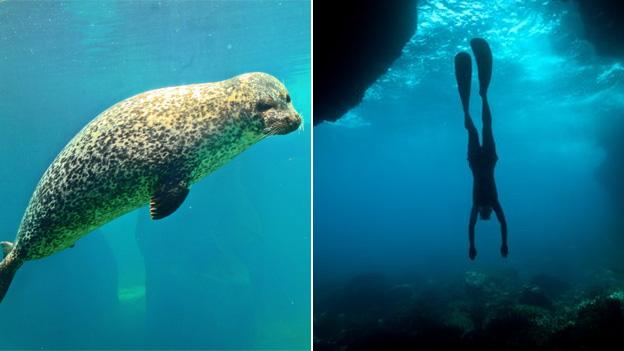Evolution 'favours bigger sea creatures'
- Published

Whales and other modern sea animals tend to be much larger than Cambrian sea creatures
The animals in the ocean have been getting bigger, on average, since the Cambrian period - and not by chance.
That is the finding of a huge new survey of marine life past and present, published in the journal Science, external.
It describes a pattern of increasing body size that cannot be explained by random "drift", but suggests bigger animals generally fare better at sea.
In the past 542 million years, the average size of a marine animal has gone up by a factor of 150.
It appears that the explosion of different life forms near the start of that time window eventually skewed decisively towards bulkier animals.
Measured by volume, today's tiniest sea critter is less than 10 times smaller than its Cambrian counterpart; both are minuscule, sub-millimetre crustaceans. But at the other end of the scale, the mighty blue whale is more than 100,000 times the size of the largest animal the Cambrian could offer: a trilobite less than half a metre long.
Big bias
The idea that natural selection might lead to animal lineages gradually gaining weight is far from new. It is set out in a proposal known as Cope's rule, after American fossil specialist Edward Drinker Cope.
19th-Century palaeontologists noticed that the ancient ancestors of modern mammals often tended to be smaller; horses, for example, can be traced to the dog-sized Eohippus genus of 50 million years ago.
The pattern is not consistent across the animal kingdom, however. Most groups of dinosaurs got bigger until they died out - but the birds that evolved from them grew smaller and lighter with the necessity of flight.
Dr Noel Heim, from Stanford University in California, set out to give Cope's rule its most thorough test yet - in the vast realm of the ocean.
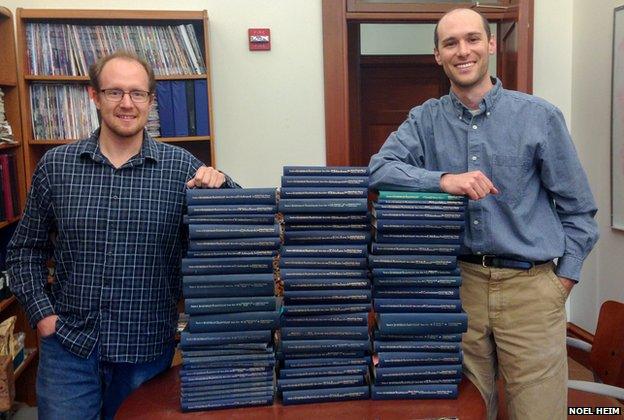
One of the team's key sources was the 50-volume "Treatise on Invertebrate Paleontology"
He enlisted the help of colleagues, undergraduates and even high school interns, to scour the scientific record for body size data - including measuring countless illustrations from venerable palaeontological tomes.
"We've had at least 50 high school students working on it over the last five years," Dr Heim told BBC News.
"It would have taken many, many, many more years doing it on my own!"
Eventually the team had amassed information on more than 17,000 groups of species, called genera. This represents over 60% of all the animal genera ever to have lived.
It was detailed analysis of this formidable set of figures that revealed the trend towards increasing size.
But Dr Heim and his colleagues say the consistent trend does not mean that every single genus of animals evolved to grow larger.
Instead, the branches of the family tree that were populated by larger animals divided many more times - diversifying and expanding so that the ocean gradually built up a greater variety of bigger and bigger beasts.
Faster movers, better eaters
The team also wanted to work out whether this bigness bias was really driven by evolutionary advantage, or was simply a matter of chance.
To this end, they put their size data from the oldest animals into a computer model and ran multiple simulations of how the family tree might evolve. Each species could die out, stay the same, or get bigger or smaller.
In some simulations, the scientists allowed the animals' size to drift randomly without affecting each species' success; in others, they tweaked the rules so that bigger animals were more likely to survive and flourish.
The version that best matched the real fossil history was one with a genuine size advantage.
"The degrees of increase in both mean and maximum body size just aren't well explained by neutral drift," said Dr Heim. "It appears that you actually need some active evolutionary process that promotes larger sizes."
As for what those benefits of extra bulk might be, the researchers cannot be sure - but larger species likely took advantage of being able to move faster, burrow better in sediment, or eat larger prey.
The changing chemistry of the ocean, including an increase in oxygen, may also have played a role, Dr Heim suggested.
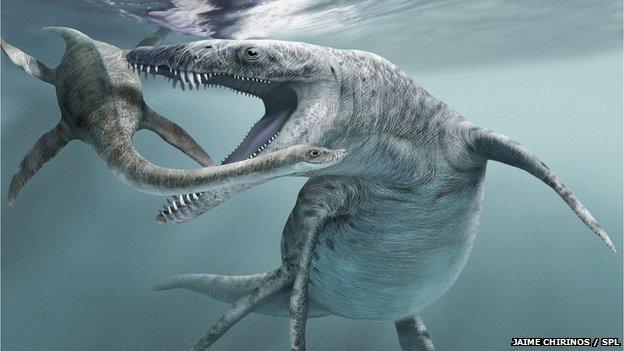
Breathing air helped marine reptiles to maintain their extra body size
Dr Michael Berenbrink, an evolutionary physiologist at the University of Liverpool, said the US team had compiled "an incredible data set".
He cautioned that the results should be interpreted carefully, noting particularly that the size increase was not just the gradual progression that a straightforward application of Cope's rule might predict.
Certain key events, also highlighted by the study's authors, deliver an extra boost. Most obviously, at the stages when land animals like reptiles and, later, mammals returned to the water, the size graph lurched upward.
It was the return of mammals, after all, that eventually produced the modern giants of the sea: whales.
"You can see in the data, there is this trend to increasing size - but a real kick comes when you have these air-breathers re-entering the water," Dr Berenbrink told the BBC.
"Then you have a sort of a step change in size."
Breathing air delivers extra oxygen to an animal's tissues, he explained, allowing them to sustain bigger bodies beneath the waves.
Dr Heim agrees that these events are important, but emphasises the huge diversity of other life forms - the fish, molluscs and other invertebrates - which together continued on a trajectory of expanding size.
"[Marine mammals and reptiles] are not driving the trend," he said. "They're really big, but in terms of diversity there's just not that many of them.
"They actually have a fairly small impact on the mean size."
Follow Jonathan on Twitter, external
- Published30 October 2014
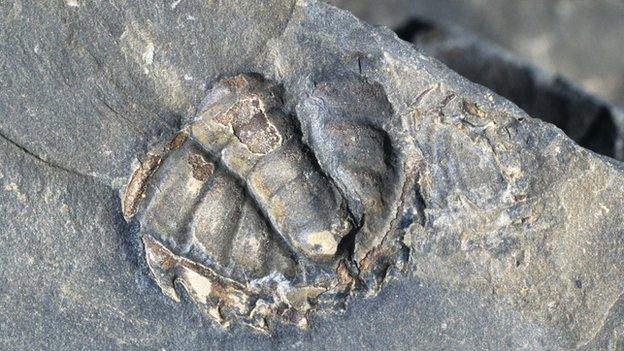
- Published23 October 2014
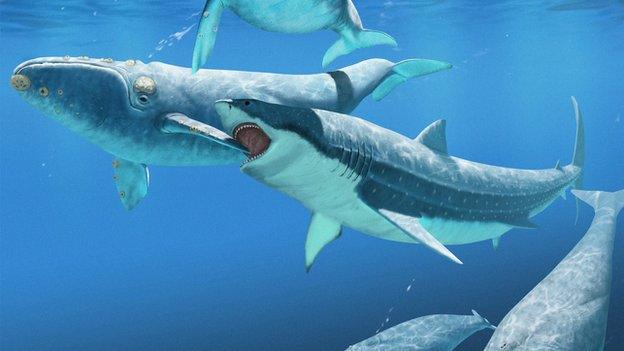
- Published4 March 2014
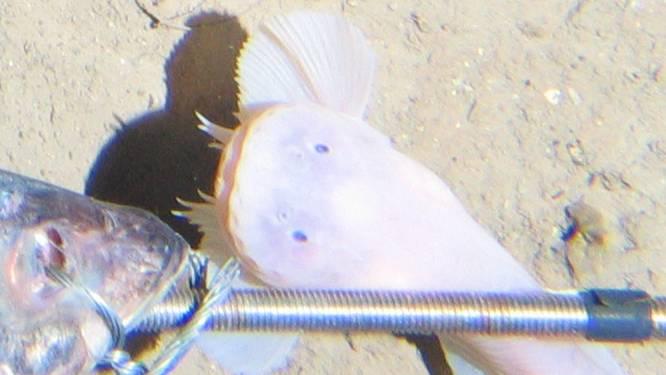
- Published4 July 2013

- Published17 June 2013
